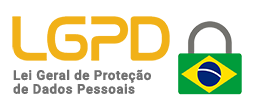The month of September marked the 2012th Forum of Educators Awareness in Combating Piracy, as part of the activities of the Escola Legal Project in 150. To meet the great interest of educators in participating, the Forum was divided into three stages, held in different dates and with more than XNUMX participants in total.
Held on September 1, the first stage of the VI Educators Awareness Forum on Combating Piracy had as its theme “Copyright and Intellectual Property X Piracy”. The subject, of great relevance, was chosen to start the event, which is part of the 2012 activities of the project and which aims to offer content and information to educators from public and private education networks, with a view to raising awareness in society, through the school community, about the evils of piracy.
The event featured a lecture by Frank Caramuru, director of the Business Software Alliance (BSA) in Brazil, who spoke about the danger of pirated products and the damage they cause to society, the government and companies. Then, Sirlei Côrtes, representative of the Motion Picture Association (MPA), gave his testimony on the impact of piracy for the film sector. In addition, the documentary “Cidade Livre de Pirataria” was produced, produced in partnership with the São Paulo City Hall, through the Urban Security Secretariat, on how the city is acting to combat this crime. The first stage of the event also featured an Educators Workshop.
The 2nd Stage of the Forum, on September 15, had the theme "Health and Medicines X Piracy", discussed in speeches and testimonies from companies and entities in the area.
ETW representative Karen Watanabe addressed the harm of piracy to society and presented data and statistics for some sectors most affected by counterfeiting and smuggling. The product protection specialist at Eli Lilly do Brasil, Mônica Hattori, who also represented Interfarma (Association of Pharmaceutical and Research Industries), spoke about the risks of drug piracy to the health of patients, in addition to showing the mechanisms of prevention and differentiation between original and counterfeit medicines, helping educators to clarify a series of doubts.
The third panel, given by Pfizer's Corporate Security manager, Alberto Santos, complemented Mônica's lecture by emphasizing the connection of criminal gangs with drug piracy and the issue of high profits obtained by criminals who counterfeit drugs.
To close the cycle, the third stage was held on September 29. In discussion, the theme “Sustainability and Environment X Piracy”. Marcio Furrier, Business Development Manager at HP, presented sustainable actions by the company, such as recycling and reusing printing supplies, and the importance of these actions to prevent or avoid impact on the environment. Furrier also explained which security items should be evaluated at the time of purchase and how to differentiate an original HP packaging from a counterfeit.
Then, there was a lecture by the Project Manager of the Department of Urban Environment of the Ministry of the Environment, Mr. Ronaldo Hipólito Soares, who spoke about the National Solid Waste Plan.
More information about the Legal School Project and the VI Educators Awareness Forum on Combating Piracy are available at http://www.projetoescolalegal.org.br/



